How our skills support and shape our career
Steven Forth is a Co-Founder of TeamFit. See his Skill Profile.
It is near the end of the year, that lovely resonant time between Christmas and the New Year. This is a time many of us use for some self reflection. So we asked a number of people at TeamFit and our sister company Ibbaka to reflect on their careers and aspirations.
This was inspired by one of the best books of 2017, Creating Great Choices by Jennifer Riel and Roger Martin. This is the follow on to Roger's book The Opposable Mind: Winning Through Integrative Thinking and gives the rest of us a practical process for putting integrative thinking to work. Integrative thinking is the ability to generate a new and better choice from two apparently contradictory alternatives.
One of the things I like about this book is that it includes 'Try This' exercises. The first one invites us to build a mind map of career success.
What is your own model of career success? Build a mind map of your beliefs and then ask yourself, Where do these beliefs come from? When and how did I start to believe what I believe? How does this model help me? How does it hinder me?
Being a dedicated learner, I usually do this sort of exercise when I can. I built my own mind map and then went out and invited several of the people I work with to do so as well. How one thinks about career success will shape how one thinks about skills. This is a very 'TeamFit' thing to think about!
Before we look at the TeamFit mind maps, let's look at one from one of the book's authors, Jennifer Riel, Managing Director of the Knowledge Infrastructure Project at the Rotman School of Management, University of Toronto. Jennifer graciously agreed to share this with us.
Looking at this one can see why she wrote this book with Roger. I was especially charmed to see 'Serendipity' as one of the first order things that has shaped her career. I never thought about it that way but there is a lot of truth to this, who we meet and what happens to us outside of our careers can shape what we want to achieve. This is especially true when you combine 'Serendipity' with 'Yes and,' which is one way to think about Integrative Thinking. Like Jennifer, I also 'write to think' or as I would phrase it 'write to learn.' Let's take a look at my own career map next.

I I had three first-order constructs shaping my career, to 'Learn,' to 'Build Community' and to 'Create Wealth.' There are some interesting connections buried here: Create Wealth > Invest > Start Organizations connects to the sequence Learn > Apply Learning > Start Organizations. So for me, 'Learning' and 'Wealth Creation' connect at 'Start Organizations.' 'Build Community' also links to 'Start Organizations'. Not surprisingly, starting organizations is something I have done many times over the years, from companies, including TeamFit, to events (like the Design Thinking unConference), to non-profits like the (now defunct) Vancouver Knowledge Management Community of Practice. Paying in to community is an important part of how I learn, invest and create wealth.
From the oldest person in this set of seven career maps, let's go to the youngest. Jessie is an intern at TeamFit and Ibbaka and makes a big contribution to our work. Here is how she thinks about her career.
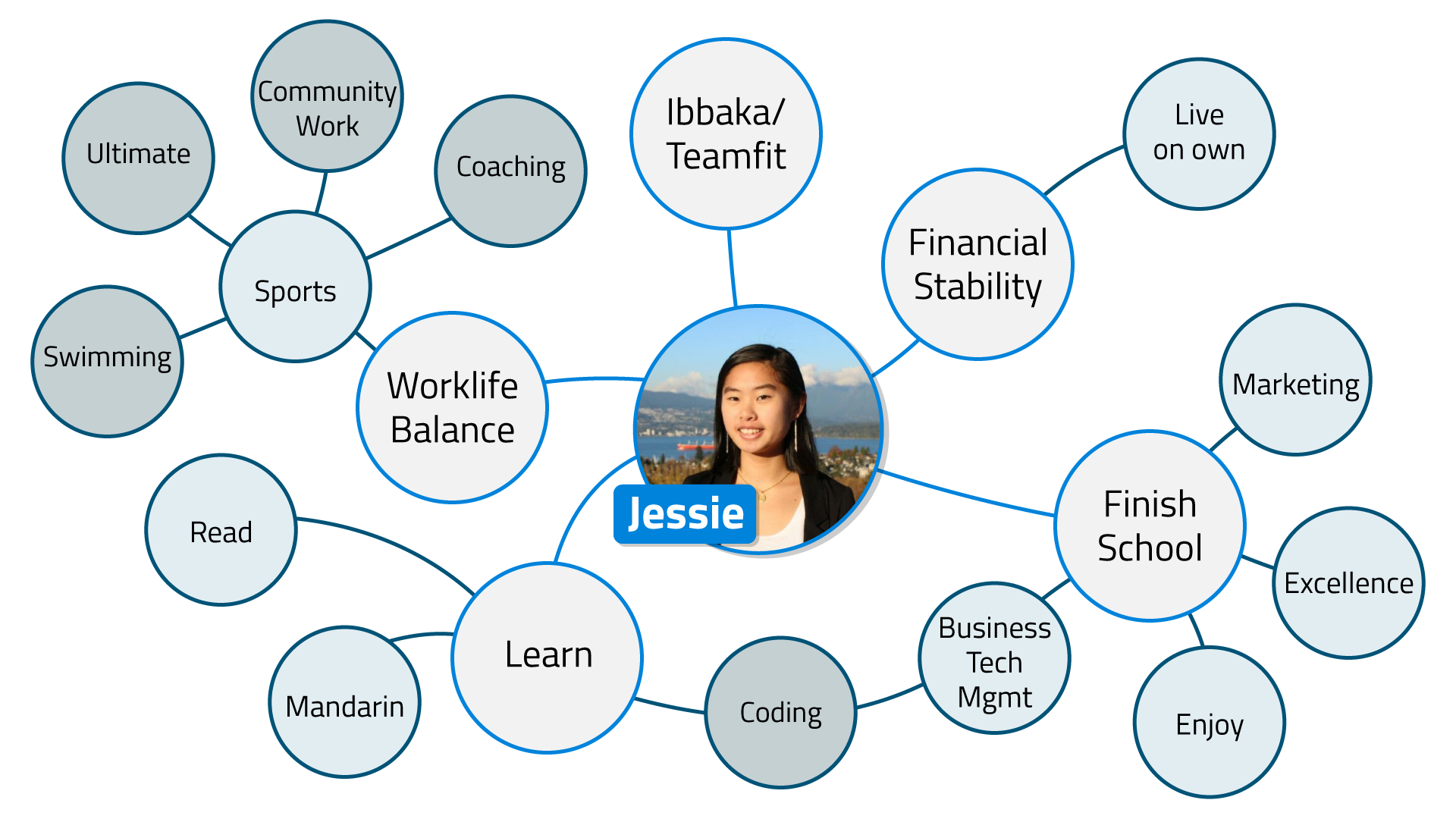
Jessie is another Learner (it is something we look for when we hire and one of our core company values). It is interesting that Work/Life Balance is already something she is looking for in her career. Her graph is not as interconnected as the two we have already looked at. I wonder if this is a personality trait or if connections naturally increase over time (see Karen's mind map below for a person at the peak of her career with a richly connected map). Jessie is still in school, at the University of British Columbia. Let's see what happens when a person graduates and has been working for a few years.
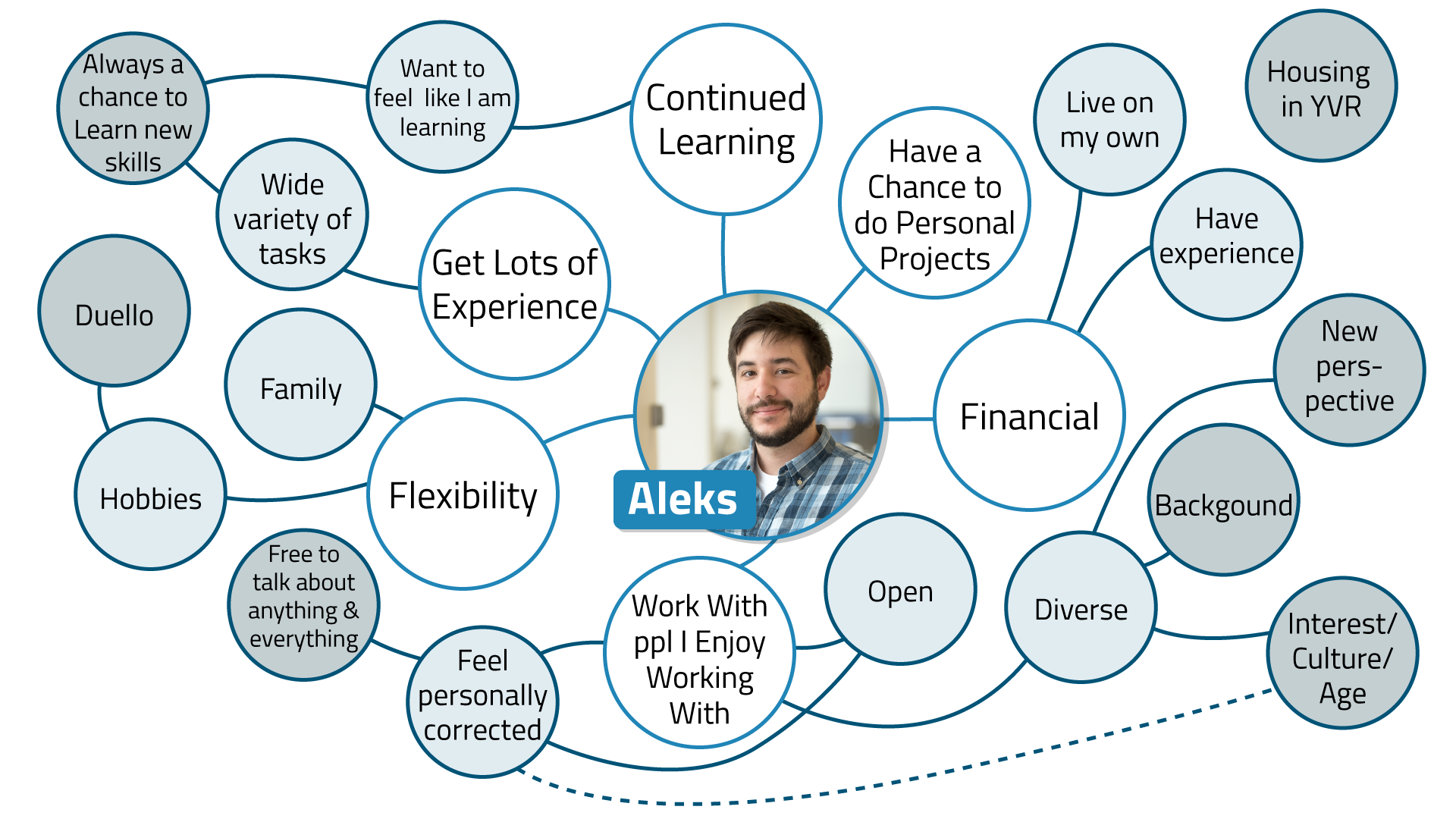
Aleks has already had a few full-time jobs and has been working at Ibbaka and TeamFit for more than a year. It is interesting to note that Financial Stability is an issue for both Jessie and Aleks and that both want to be independent. That Aleks is not so already reflects the painfully high cost of housing in Vancouver, something important enough to him that he called out. The connection Diverse > Interests/Cultures/Ages to Feel Personally Connected is something I see as a hopeful sign. This also reflects our core value of Diversity. We consciously try to increase the diversity of the team .
Aleks, a software engineer, works closely with Anapaula, a designer. Anapaula turned our whiteboard sketches into the mindmaps you see here. It is interesting to note that while 'Learn' is a first order construct for me, it is third order for Anapaula, and is on the path Be Creative > Read > Learn. Anapaula reads widely in at least three different languages (Spanish, French and English).
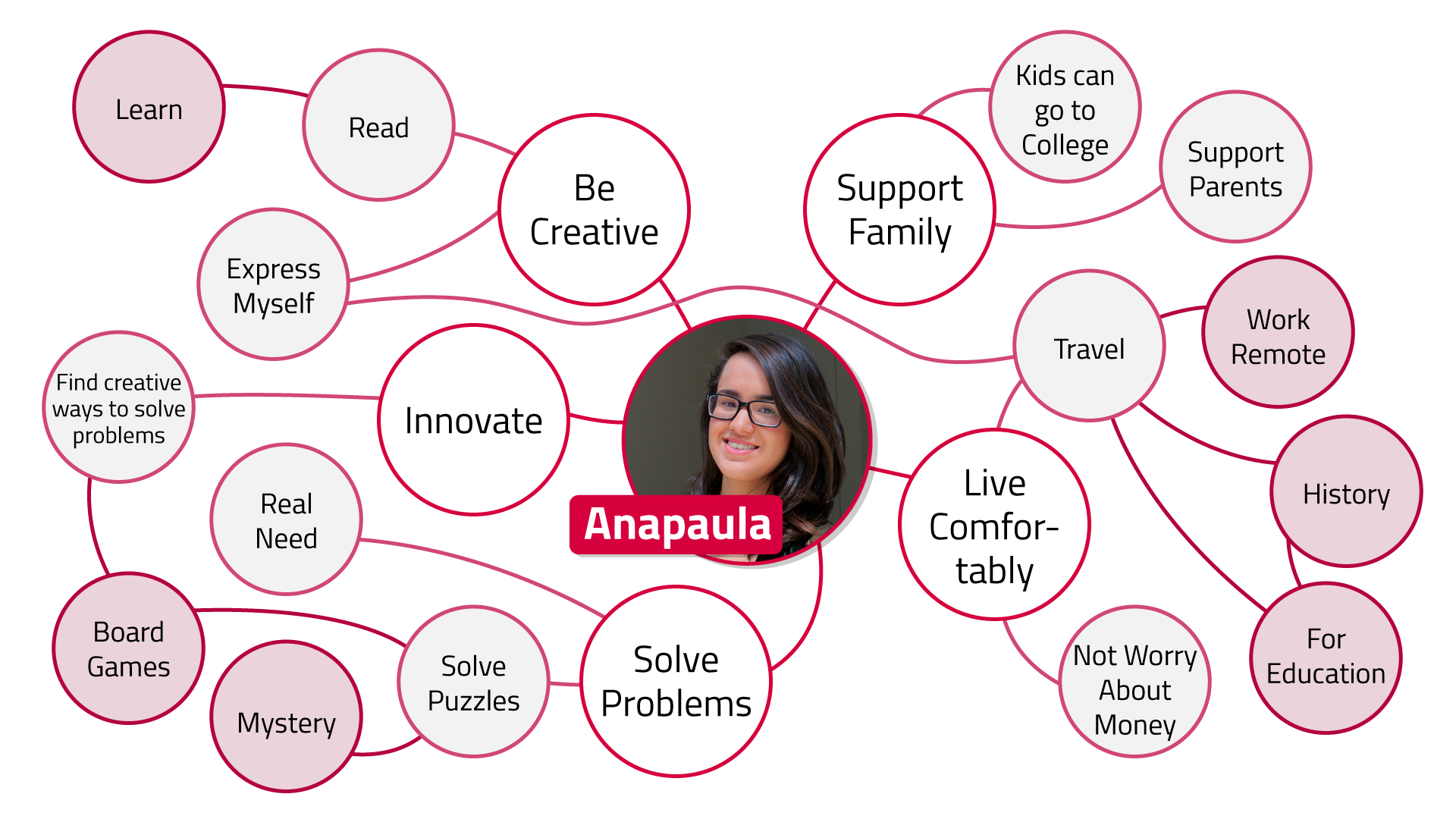
Jessie, Aleks and Anapaula are still relatively early in their careers. Kavita is in mid career and has worked in many roles at several different companies. You can see here how one person committed to User Experience (UX) thinks about the world. It starts with a notion of service, 'doing things for people,' and 'finding gaps.' One finds the 'Product' and the confluence of 'doing things for people' and 'applying user interface (design).' This seems to me a better place to start than the product itself.
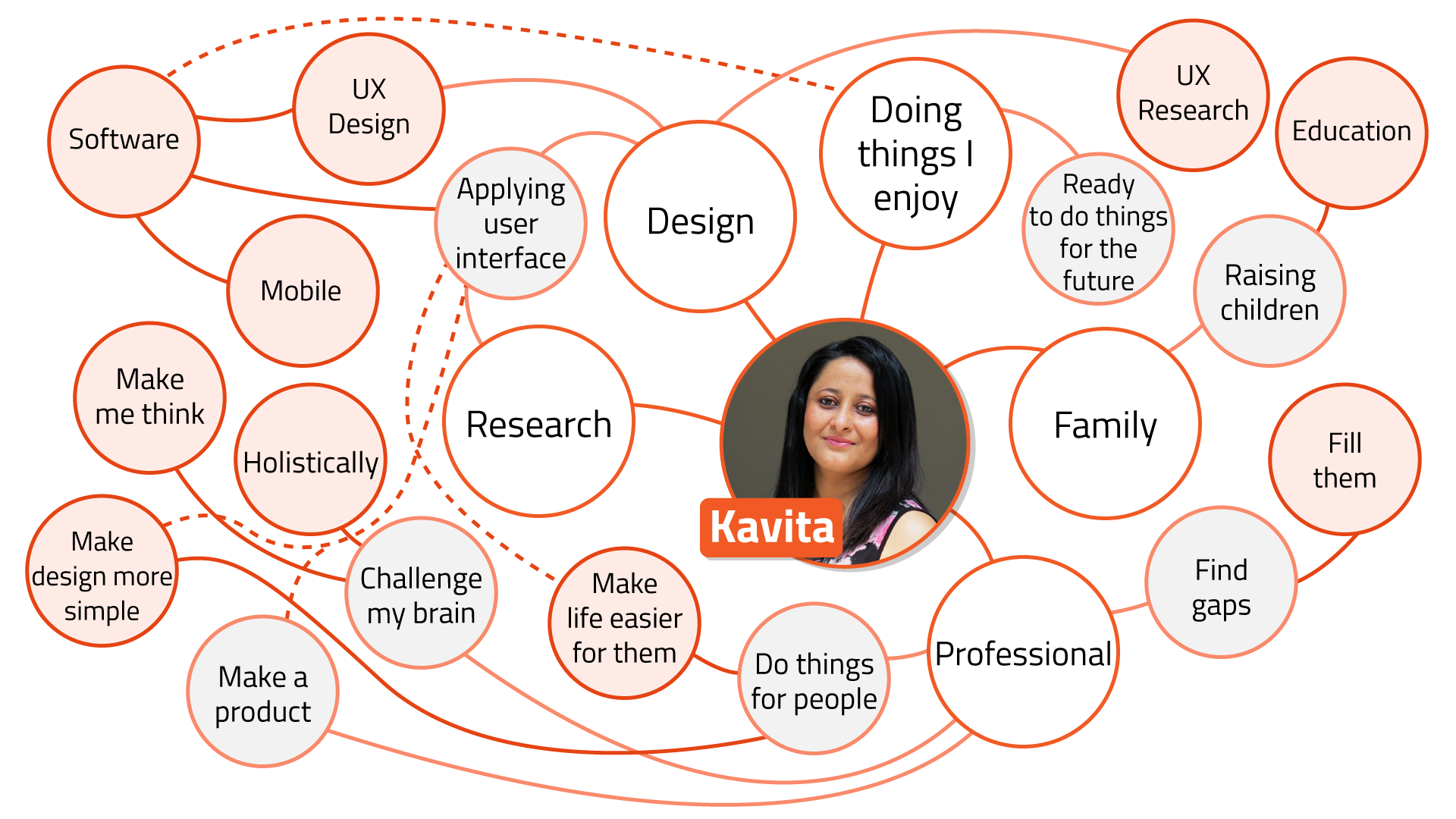
Saving the best for last, here is Karen Chiang's career mind map. Karen and I have worked together on and off for a long time, and have had a lot of influence on each other. Even so, I learned a lot from her mind map. There is a lot to think about here, but I found is fascinating that 'Self Identity' and 'Fluidity' were first level concepts and that these two connect at 'Self Direction.'
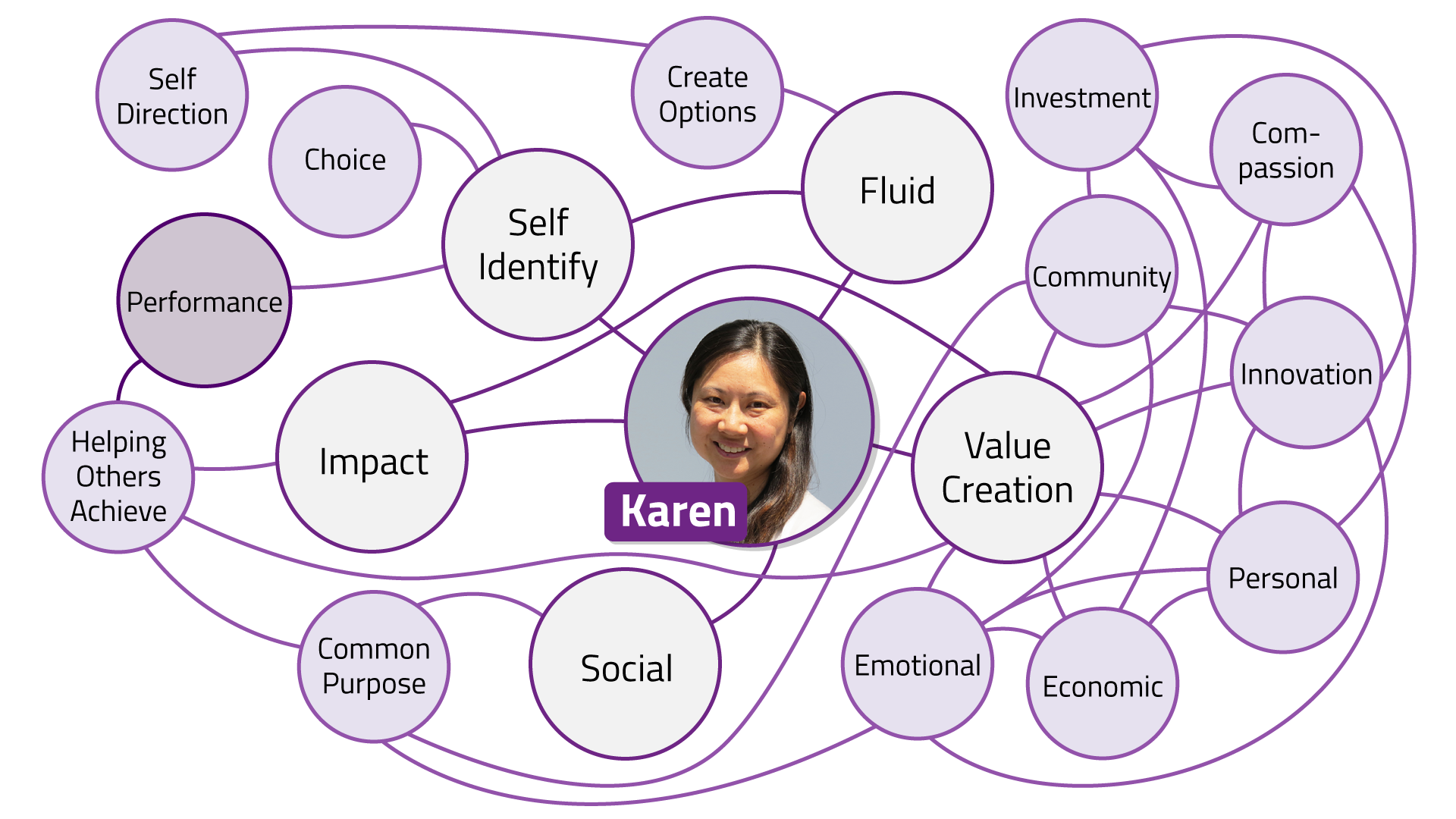
The cluster of connections around 'Community,' 'Innovation,' 'Investment,' and 'Compassion' helped me get a better feeling for the investment decisions Karen makes. Karen is an active user of TeamFit, so it is interesting to see how her career objectives relate to her Skill Map.
It is easier to do this by focussing in on just her top skills.
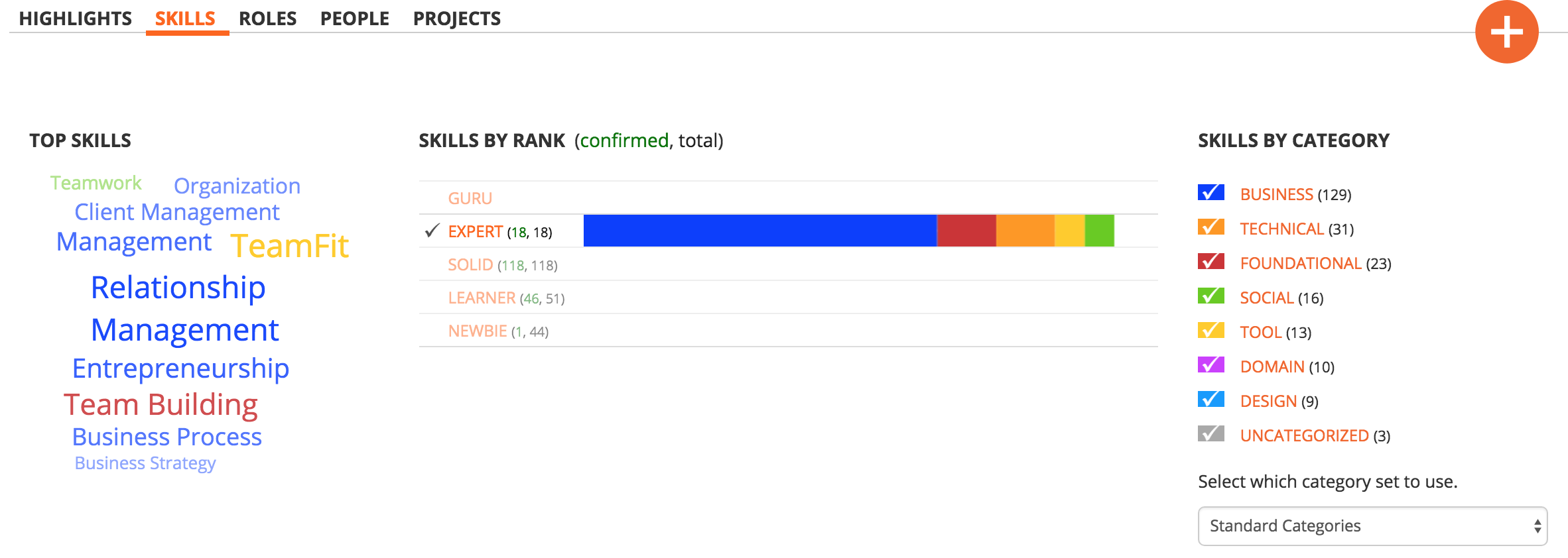
Relationship Management, Team Building, Teamwork all speak to her career goals of creating value in the context of the team of people she works with.
Connecting skills to career objectives seems to be one way to bring together TeamFit's focus on skills with people's wider concerns about where they want to go and what they want to achieve. This will be one direction for TeamFit's research in 2018. We hope to collect many more mind maps of career objectives, and to do so from people in different professions and at different stages of their career. Once we have a few hundred of these we will begin looking for patterns. Contact me at steven.forth@nugg.co if you would like to participate with us in this work. We will collect mind maps, put them in a consistent visual format, and represent them in RDF (the data representation language used in the semantic web, that has a convenient structure for representing connected graphs). Once we have these maps in RDF we can better analyse and connect them. We hope the patterns we discover will help people to better link their skills to their career aspirations, and provide people with another tool to realize their potential and to achieve their goals, which is, after all, what TeamFit is about.










